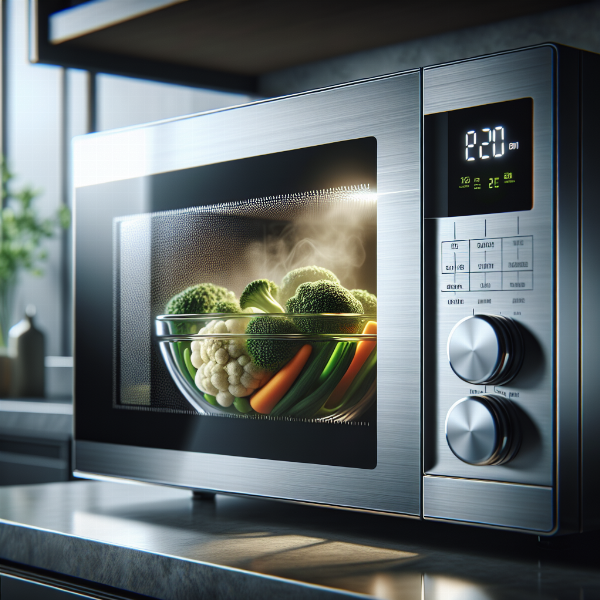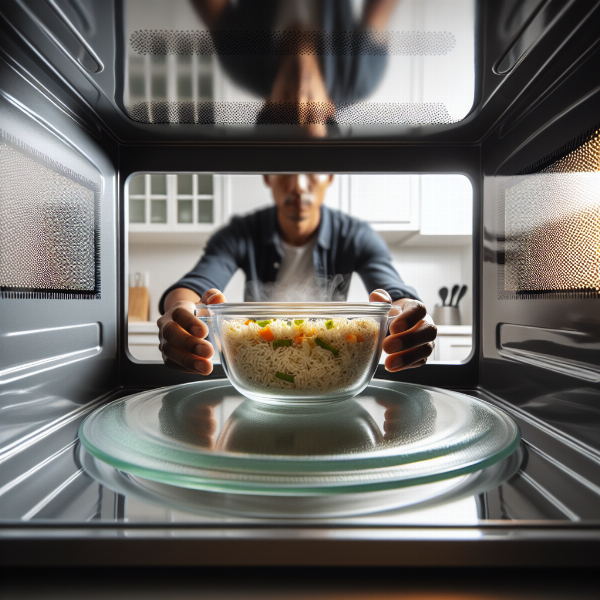The microwave oven. For many, it’s the unsung hero of the kitchen, a magical box that turns frozen leftovers into a hot meal in minutes. For others, it’s a source of suspicion, surrounded by myths about nutrition and safety. So, what’s the real story? As the experts at Microwave Oven Top, we’re here to cut through the noise. Understanding the Microwave Oven Pros And Cons is the first step to mastering this incredibly useful appliance. Whether you’re a college student, a busy parent, or just someone who loves a quick snack, this comprehensive guide will help you decide if a microwave is the right fit for your culinary life and how to use it to its full potential.
Let’s plug in and explore the good, the bad, and the frequently misunderstood aspects of the modern microwave.
The Pros: Why a Microwave Oven Deserves a Spot on Your Counter
It’s no accident that millions of households rely on a microwave every day. The advantages are compelling, practical, and have genuinely changed the way we eat.
Unmatched Speed and Convenience
This is the number one reason people buy a microwave. Got leftovers from last night? They’ll be steaming hot in two minutes. Need to melt butter for a recipe? Ten seconds. Defrosting chicken for dinner? It’s a matter of minutes, not hours.
- Reheating: Revives meals almost instantly, preserving much of their original texture and taste.
- Defrosting: The “defrost” function saves you when you forget to take food out of the freezer ahead of time.
- Quick Cooking: Perfect for steaming vegetables, cooking potatoes, and making quick mug cakes.
In our fast-paced world, the time-saving benefit of a microwave is undeniable. It’s the ultimate kitchen shortcut.
Energy Efficiency Champion
Ever felt the heat radiating from your conventional oven while it preheats? That’s a lot of energy being used to heat a large, empty space. Microwaves, on the other hand, are incredibly efficient. They channel energy directly to the water molecules within the food, heating it from the inside out. This targeted approach means:
- Less Wasted Energy: No preheating required.
- Lower Electricity Bills: Using a microwave for 15 minutes uses significantly less energy than running a conventional oven for an hour.
- Cooler Kitchen: Microwaves don’t heat up your kitchen, a huge plus during hot summer months.
Expert Insight from Dr. Alistair Finch, Food Scientist:
“A common misconception is that microwaves ‘nuke’ the nutrients out of food. In reality, the opposite is often true. Because microwave cooking times are so short and require less water, they can be better at preserving water-soluble vitamins, like Vitamin C and B vitamins, compared to boiling or prolonged baking.”
Nutrient Preservation Powerhouse
Contrary to popular belief, microwaving can be one of the healthiest ways to cook. The key to preserving nutrients in food is to cook it quickly and with as little liquid as possible. The microwave excels at both. Steaming vegetables in the microwave, for example, is a fantastic way to retain more vitamins and minerals that would otherwise be lost in boiling water.
 A sleek, modern microwave oven highlighting its pros and cons for quick, efficient cooking in a contemporary kitchen.
A sleek, modern microwave oven highlighting its pros and cons for quick, efficient cooking in a contemporary kitchen.
Easy to Use and Clean
Most microwaves are designed for simplicity. With clearly labeled buttons for time, power levels, and presets like “popcorn” or “potato,” even a novice can use one with confidence. And when it comes to cleanup, it’s a breeze. A simple wipe-down with a damp cloth is usually all it takes. For tougher, caked-on messes, just heat a bowl of water with lemon juice or vinegar for a few minutes—the steam will loosen the grime, making it easy to wipe away.
The Cons: Navigating the Microwave Oven’s Limitations
Of course, no appliance is perfect. To fully appreciate the microwave oven pros and cons, we must also look at its drawbacks. Understanding these limitations is key to avoiding kitchen frustrations.
The Uneven Heating Dilemma
Have you ever taken a bite of a microwaved meal that’s scorching on the edges and still icy in the middle? This is the most common complaint about microwaves. The microwaves don’t always penetrate food uniformly, leading to hot and cold spots.
How to fix it:
- Stir: Halfway through cooking, give your food a good stir to redistribute the heat.
- Arrange Smartly: Place denser parts of the food towards the outer edge of the plate where they’ll receive more energy.
- Use the Turntable: Ensure your turntable is working correctly. Its rotation is crucial for more even exposure. Check out our guide on
[internal link]how to fix a broken microwave turntable[/internal link]if you’re having trouble.
No Browning or Crisping
A microwave heats food with, well, microwaves—not with dry, radiant heat. This means it cannot produce the Maillard reaction, the chemical process that gives baked, roasted, and fried foods their delicious golden-brown crust and complex flavor.
- Soggy Pizza: Reheated pizza crust will be soft, not crispy.
- Pale Meats: You can cook chicken in a microwave, but it will look pale and steamed, not roasted.
- No Golden-Brown Bake: Don’t expect your microwave to bake bread or cookies with a perfect crust.
While some high-end combination models offer grilling or convection features to combat this, a standard microwave simply can’t brown and crisp food effectively.
Expert Insight from Maria Flores, Senior Appliance Technician:
“The biggest service calls I get are related to user error, not a faulty machine. People put metal in the microwave, causing sparks, or they ignore uneven heating. Always use microwave-safe containers and respect the machine’s limits. A little knowledge prevents a lot of expensive repairs.”
Material Restrictions (The “No Metal” Rule)
This is a critical safety rule. You cannot put metal objects, including aluminum foil, silverware, or metal-trimmed dishes, in a microwave. The metal reflects the microwaves, which can cause sparking (a phenomenon called arcing), damage the inside of your appliance, and even start a fire. You must use containers specifically labeled as “microwave-safe,” which typically includes glass, ceramic, and certain types of plastic.
 A person safely placing a microwave-safe glass container into a microwave oven, illustrating one of the cons and safety precautions to consider.
A person safely placing a microwave-safe glass container into a microwave oven, illustrating one of the cons and safety precautions to consider.
Potential for Overcooking
The same speed that makes a microwave so convenient can also be its downfall. A few extra seconds can be the difference between a perfectly cooked vegetable and a rubbery, shriveled mess. It takes practice to learn the right cooking times for different foods in your specific microwave, as power (wattage) can vary significantly between models. Always start with the minimum recommended time and add more if needed.
The Verdict: Weighing the Microwave Oven Pros and Cons
So, is a microwave oven a kitchen essential or an overrated gadget? The truth is, it depends on your lifestyle.
The microwave oven pros and cons show that it’s an unparalleled tool for speed, convenience, and energy-efficient reheating. It’s perfect for busy individuals, families needing to warm up meals at different times, and anyone who wants to quickly steam vegetables or defrost ingredients.
However, it’s not a replacement for a conventional oven. If you cherish crispy crusts, golden-brown roasts, and complex baked goods, you’ll find the microwave’s capabilities limiting. By understanding both its strengths and its weaknesses, you can use it as a powerful and effective tool in your culinary arsenal, not as a one-size-fits-all solution.
Frequently Asked Questions (FAQ)
1. Do microwave ovens destroy nutrients in food?
No, this is a common myth. In fact, due to shorter cooking times and less need for water, microwaving can preserve more vitamins and minerals than some traditional cooking methods like boiling.
2. Is it safe to stand in front of a microwave while it’s running?
Yes, it is safe. Modern Microwave Ovens are built with excellent shielding and safety interlocks that prevent harmful levels of radiation from escaping. The amount of leakage allowed by federal standards is well below the level known to harm people.
3. What does “microwave-safe” actually mean?
A “microwave-safe” label means the container is made from materials that won’t melt, warp, or leach harmful chemicals into your food when heated in the microwave. This typically includes glass, ceramic, and plastics labeled with numbers 2, 4, and 5.
4. Why can’t I put metal in the microwave?
Metal reflects microwaves instead of absorbing them. This can cause the energy to arc, or spark, between the metal object and the oven’s interior walls. This can damage your microwave’s internal components and is a fire hazard.
5. Can a microwave cook food all the way through?
Yes, but it can sometimes be uneven. Microwaves cook food from the outside in, but they only penetrate about 1 to 1.5 inches deep. Heat then travels to the center of the food via conduction. For thicker items, it’s important to use a lower power setting for a longer time and let the food stand for a few minutes after cooking to allow the heat to distribute evenly.
6. How do I know what wattage my microwave is?
The wattage is usually listed on a sticker inside the microwave door, on the back of the unit, or in the owner’s manual. Most modern microwaves are between 700 and 1200 watts. Higher wattage generally means faster cooking times.
7. Why does my food get soggy in the microwave?
Microwaves heat the water molecules in food, creating steam. If this steam is trapped (for example, by a tight-fitting lid), it can condense and make the food’s surface soggy. Venting the container slightly can help let some of this steam escape.